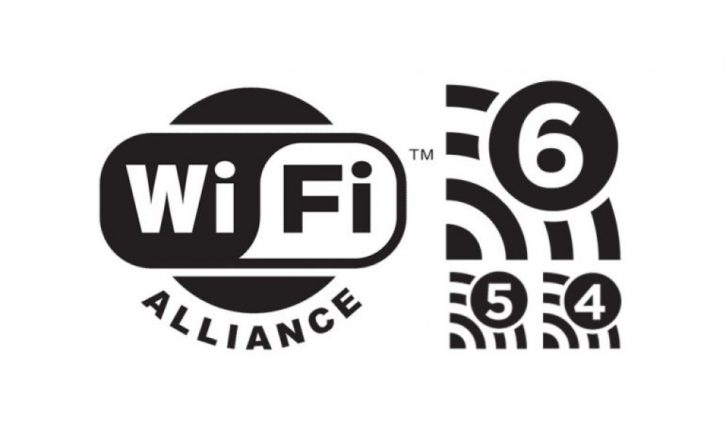
In a unanimous vote, the Federal Communications Commission adopted a proposal today that opens the 6GHz band for unlicensed Wi-Fi use.
This frees up more than 1,2000 MHz of additional bandwidth for next-gen Wi-Fi 6E devices with antennas and chipsets capable of tapping into the extra spectrum.
“To accommodate that increase in Wi-Fi demand, the FCC is aiming to increase the supply of Wi-Fi spectrum with our boldest initiative yet: making the entire 6GHz band available for unlicensed use,” reads the FCC’s announcement of the plan to vote. “By doing this, we would effectively increase the amount of spectrum available for Wi-Fi almost by a factor of five.”
CNET reports that an industry-funded study by Columbia professor Raul Katz backs that claim up, and suggests that the move could generate more than $180 billion in US revenue by 2025.
The 6GHz band has more than twice as much bandwidth as the 5GHz band used by Wi-Fi devices today,.It can accommodate up to seven 160MHz channels at once.
The band also benefits in terms of latency because older-gen devices don’t operate in that spectrum. CNET suggests that this could give the 6GHz band the potential to serve as an exclusive, multilane expressway for devices using Wi-Fi 6,
FCC Chairman Ajit Pai in a statement released after the vote, pointed to the emergence of Wi-Fi 6 as a key motivator behind the decision.
“To realize that potential, we need faster, stronger Wi-Fi networks,” Pai wrote. “But in order to fully take advantage of the benefits of Wi-Fi 6, we need to make more midband spectrum available for unlicensed use. It’s been a long, long time since we did that and consumers deserve it.”
“Today’s vote lays the groundwork for tech companies to offer next-generation connectivity at a time when we need it most,” Gary Shapiro, president and CEO of the Consumer Technology Association was quoted after the vote. “Opening the 6GHz band means more spectrum available to power the Wi-Fi devices we rely on for working, socializing and even getting medical treatment remotely.”
CNET has extensively reported on industry enthusiasm for this move, with WiFi 6E devices in the pipeline for some two years. In January, the Wi-Fi Alliance announced the new Wi-Fi 6E designation for devices equipped to operate in that 6GHz spectrum. Broadcom soon followed suit with Wi-Fi 6E chipsets for things like access points and mobile phones, and expects that manufacturers will move quickly to get those chips into new devices in the coming months.
“This is the most substantive decision any Commission has made on unlicensed spectrum in almost 25 years, and one that will empower our wireless experiences for the next 20 years, it’s a definite moment in US wireless history.” –Vijay Nagarajan, VP of marketing, Broadcom
“What they’re talking about is creating a brand new band for Wi-Fi,” added Broadcom government affairs director Chris Szymanski. “That hasn’t been done before. And so this is really one of the most heavily studied proceedings that I’ve seen, I mean, thousands of pages of technical studies. It was important for the FCC to get it right.”
WiFi Alliance reacts to 6Ghz announcement
“By making 6 GHz available for unlicensed use, the FCC has secured the future of Wi-Fi. 6 GHz access is a seminal development for connectivity and provides Wi-Fi more capacity to deliver groundbreaking use cases and to unlock novel new Wi-Fi applications,” said Edgar Figueroa, president and CEO, Wi-Fi Alliance in a statement after the vote. “Today’s global climate highlights how important Wi-Fi is in connectivity and productivity, and new Wi-Fi 6E solutions will further increase Wi-Fi’s standing.”
Wi-Fi Alliance members are demonstrating their readiness to move quickly into the band before the end of the year, with initial forecasts expecting more than 316 million Wi-Fi 6E devices will enter the market in 2021. Wi-Fi 6E will improve Wi-Fi experiences everywhere – indoors and outdoors, at home, on-the-go, in densely populated areas, and large public venues. Wi-Fi 6E will soon provide higher resolution streaming for applications such as video conferencing, lower latency for gaming and industrial IoT, and faster download speeds to provide critical services to enterprise, education, and healthcare markets. Users will also see a new generation of mobile devices, including those that deliver bi-directional video and AR/VR applications.
“We expect initial Wi-Fi 6E products to enter the market this year, with the first Wi-Fi 6E access points available by the fourth quarter of 2020,” said Phil Solis, research director at IDC. “We expect Wi-Fi 6E will gain momentum and see rapid 2021 adoption with more chipsets targeting flagship smartphones, PCs, TVs, and even VR devices.”
Wi-Fi 6E extends the exciting capabilities of Wi-Fi 6 into 6 GHz, and the additional spectrum addresses Wi-Fi’s spectrum shortage by bringing nearly six times the total capacity in both 2.4 and 5 GHz, seven contiguous 160 MHz channels, and less interference from legacy Wi-Fi devices. This translates to multigigabit Wi-Fi speeds and more devices performing optimally on a Wi-Fi network at once. 6 GHz brings more benefits from the latest generation of Wi-Fi, paving the way for faster, higher-performance, and lower latency Wi-Fi devices and networks.
Much of the work that’s been done has gone toward demonstrating that unlicensed Wi-Fi usage wouldn’t interfere with the small amount of existing traffic on the 6GHz band — things like emergency broadcasts and microwave transmissions.
Here are the routers that support 6GHz
FANGs react to 6GHz vote
Apple as well supported the move. “We applaud the FCC’s decision to open up the 6GHz band for Wi-Fi and other uses,” the company said in a statement. “It sets the course for the next generation of Wi-Fi networks and will help us to create innovative, new product experiences for our customers.”
In support, Facebook’s Director of Wireless Technologies Bruno Cendón tweeted











